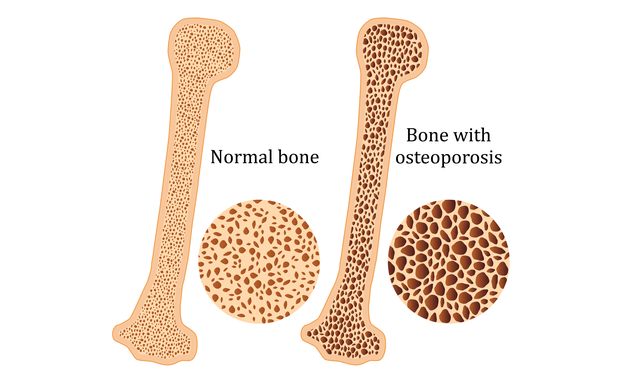
Men Can Have Osteoporosis Too
Studies suggest that a large majority of the Indian population considers Osteoporosis to be a “woman’s disease”. The truth of the matter, however, is that the average man stands a very real risk of getting this debilitating disorder, especially after the age of 50.
Read on to learn more about this “silent disease” that is responsible for causing issues like hip and bone fractures in 1 in 5 men worldwide.
What Is Osteoporosis?

Osteoporosis is a condition that weakens your skeleton and makes your bones brittle and easily breakable. It is called a “silent disease” because its symptoms often don’t show up until a fracture occurs.
Our bones are made up of a soft, spongy mesh of bone which looks like a honeycomb. It is therefore of little surprise that the word osteoporosis itself means porous or spongy bone.
When a person has osteoporosis, the holes in the honeycomb-like structure of their bones become larger, making them increasingly susceptible to fractures and breakage.
Why Do Fewer Men Have Osteoporosis?

Osteoporosis develops less often in men than in women because:
- Men have larger skeletons
- Their bone loss starts later and progresses at a slower pace
- They don’t have phases of rapid hormonal changes (unlike women after menopause)
Are You At Risk Of Osteoporosis?
With an increase in life expectancy for men above 70, the problem of osteoporosis has been recognised as a matter of concern. Where more than half of the female population is advised to start taking calcium and vitamin supplements by the time they’re 30, only a startling 21% of men are advised to take similar supplements for their physical wellbeing.
Risk Factors for Osteoporosis in Men
Here are some of the major risk factors that can cause osteoporosis in men:
- Age-related bone loss (also called senile osteoporosis)
- Glucocorticoid medications (that affect the metabolism of Calcium, Vitamin D, and the bones)
- Hypogonadism (low levels of testosterone)
- Alcohol abuse and smoking
- COPD and Asthma
- Gastrointestinal diseases
How Do You Know You Have Osteoporosis?

Osteoporosis often does not show symptoms until you’ve had your first fracture. If it is detected early on, pain and progression of Osteoporosis can be effectively managed. Watch out for symptoms such as:
- Back pain, caused by a fracture
- A gradual loss of height
- Stooped posture
- Bones that are excessively brittle
Osteoporosis in men is diagnosed by administering tests like X-rays, urine tests, and blood tests. Your doctor may also suggest getting a Bone Mineral Density test, or BMD that can identify osteoporosis, gauge your risk for future fractures and decide on a treatment plan.
However, only 18% of men with a fracture are referred for a BMD test, as opposed to 53% women. So, if you’ve fractured a bone, consult your doctor and know if you’re in need of an osteoporosis evaluation.
How Can You Avoid Future Fractures?
Osteoporosis can be managed effectively if diagnosed at an early stage, especially if you’re well-informed and are administering doctor-recommended medications, diet, exercise, and lifestyle changes.
It does not matter if you’ve had one fracture or two - it’s never too late to consult your doctor and find out any hidden medical conditions that may be causing your bone fractures.
Here are some tips to keep your bones healthy and strong:
- Have a diet rich in proteins and other essential minerals and vitamins
- Take adequate amounts of calcium and Vitamin D because they’re the building blocks of bone tissues
- Avoid weight-loss or weight-gain diets unless advised by a dietician
- Involve yourself in regular weight-bearing activities and other forms of physical exercise
- Quit smoking and excessive alcohol consumption
Here is a chart with recommended Calcium and Vitamin D intake for adults:
| Age Group | Calcium (mg/day) | Vitamin D (IU)
| 31 to 50 years old | 1000 | 600
| 51-70-year-old males | 1000 | 600
| 51-70-year-old females | 1200 | 600
| 70 years old | 1200 | 800
| 14-18 years old, lactating or pregnant | 1300 | 600
| 19-50 years old, lactating or pregnant | 1000 | 600
There have been fewer studies on osteoporosis in men than in women. However, medical experts strongly recommend making immediate lifestyle and diet changes to prevent osteoporosis and maintain healthy bones. If you’ve already been diagnosed with osteoporosis, treatment and exercise can effectively manage symptoms.
This #WorldOsteoporosisDay, stay informed and consult a doctor in case you feel you have any symptoms of this degenerative bone disease.




